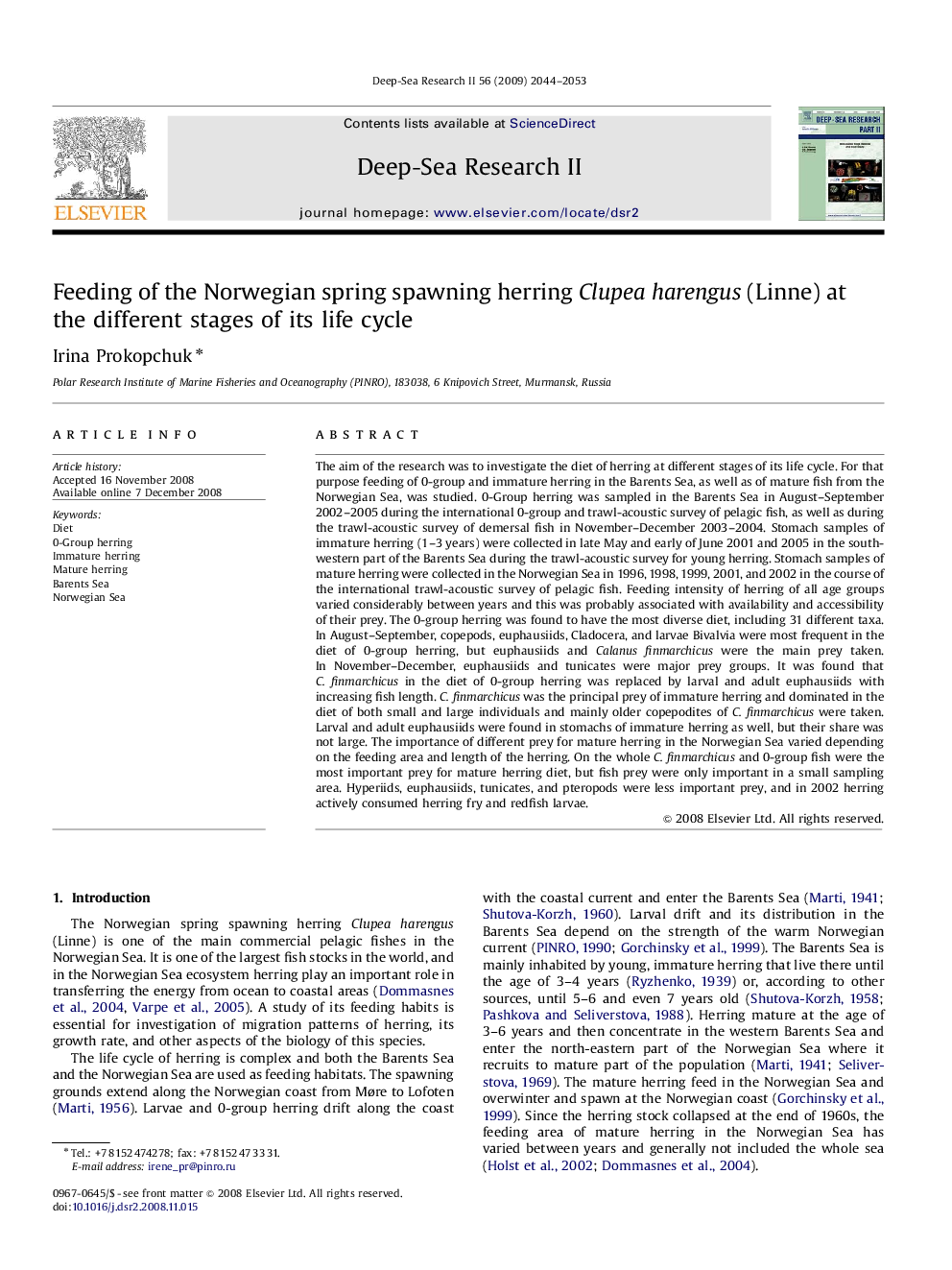| کد مقاله | کد نشریه | سال انتشار | مقاله انگلیسی | نسخه تمام متن |
|---|---|---|---|---|
| 4537858 | 1626481 | 2009 | 10 صفحه PDF | دانلود رایگان |

The aim of the research was to investigate the diet of herring at different stages of its life cycle. For that purpose feeding of 0-group and immature herring in the Barents Sea, as well as of mature fish from the Norwegian Sea, was studied. 0-Group herring was sampled in the Barents Sea in August–September 2002–2005 during the international 0-group and trawl-acoustic survey of pelagic fish, as well as during the trawl-acoustic survey of demersal fish in November–December 2003–2004. Stomach samples of immature herring (1–3 years) were collected in late May and early of June 2001 and 2005 in the south-western part of the Barents Sea during the trawl-acoustic survey for young herring. Stomach samples of mature herring were collected in the Norwegian Sea in 1996, 1998, 1999, 2001, and 2002 in the course of the international trawl-acoustic survey of pelagic fish. Feeding intensity of herring of all age groups varied considerably between years and this was probably associated with availability and accessibility of their prey. The 0-group herring was found to have the most diverse diet, including 31 different taxa. In August–September, copepods, euphausiids, Cladocera, and larvae Bivalvia were most frequent in the diet of 0-group herring, but euphausiids and Calanus finmarchicus were the main prey taken. In November–December, euphausiids and tunicates were major prey groups. It was found that C. finmarchicus in the diet of 0-group herring was replaced by larval and adult euphausiids with increasing fish length. C. finmarchicus was the principal prey of immature herring and dominated in the diet of both small and large individuals and mainly older copepodites of C. finmarchicus were taken. Larval and adult euphausiids were found in stomachs of immature herring as well, but their share was not large. The importance of different prey for mature herring in the Norwegian Sea varied depending on the feeding area and length of the herring. On the whole C. finmarchicus and 0-group fish were the most important prey for mature herring diet, but fish prey were only important in a small sampling area. Hyperiids, euphausiids, tunicates, and pteropods were less important prey, and in 2002 herring actively consumed herring fry and redfish larvae.
Journal: Deep Sea Research Part II: Topical Studies in Oceanography - Volume 56, Issues 21–22, October 2009, Pages 2044–2053